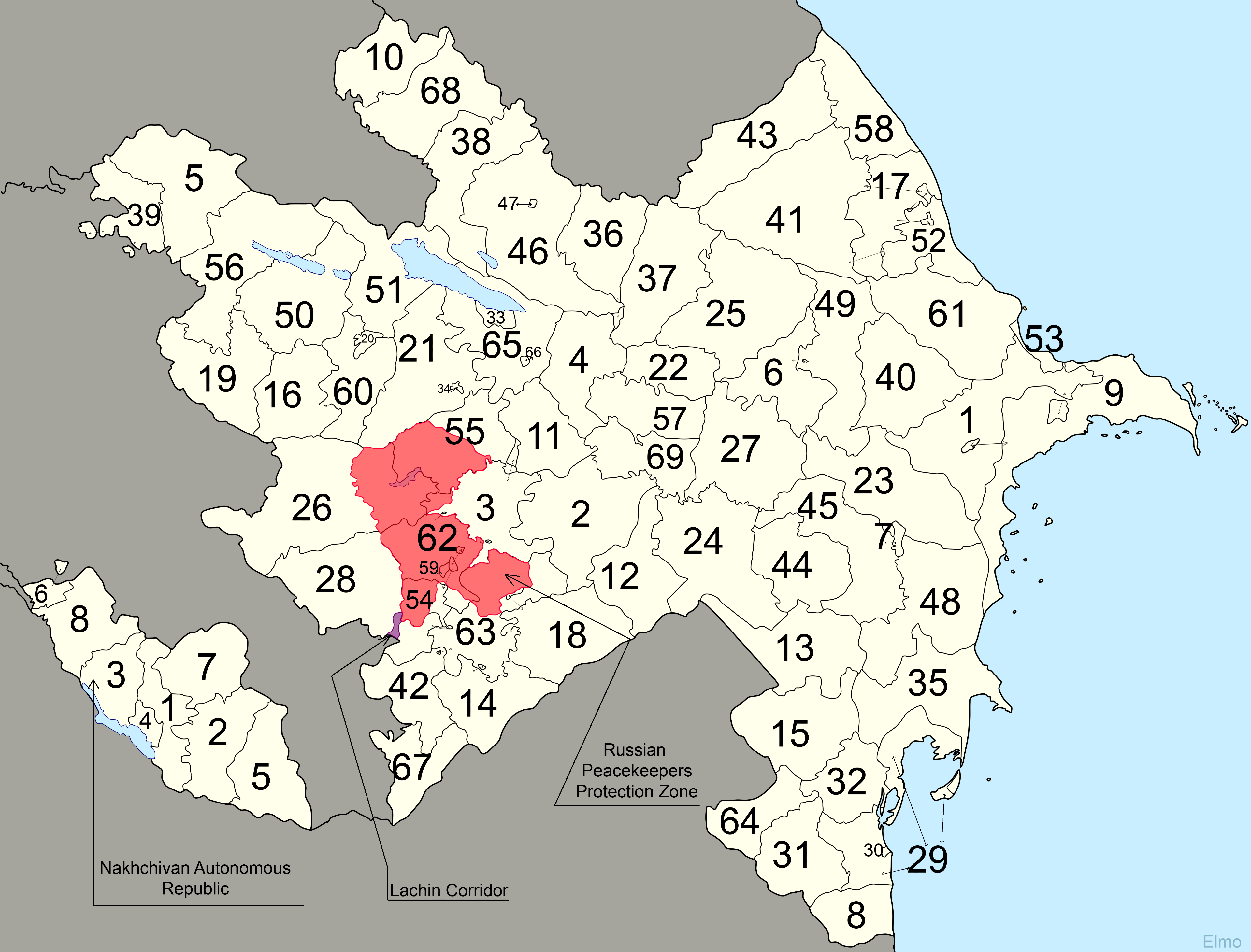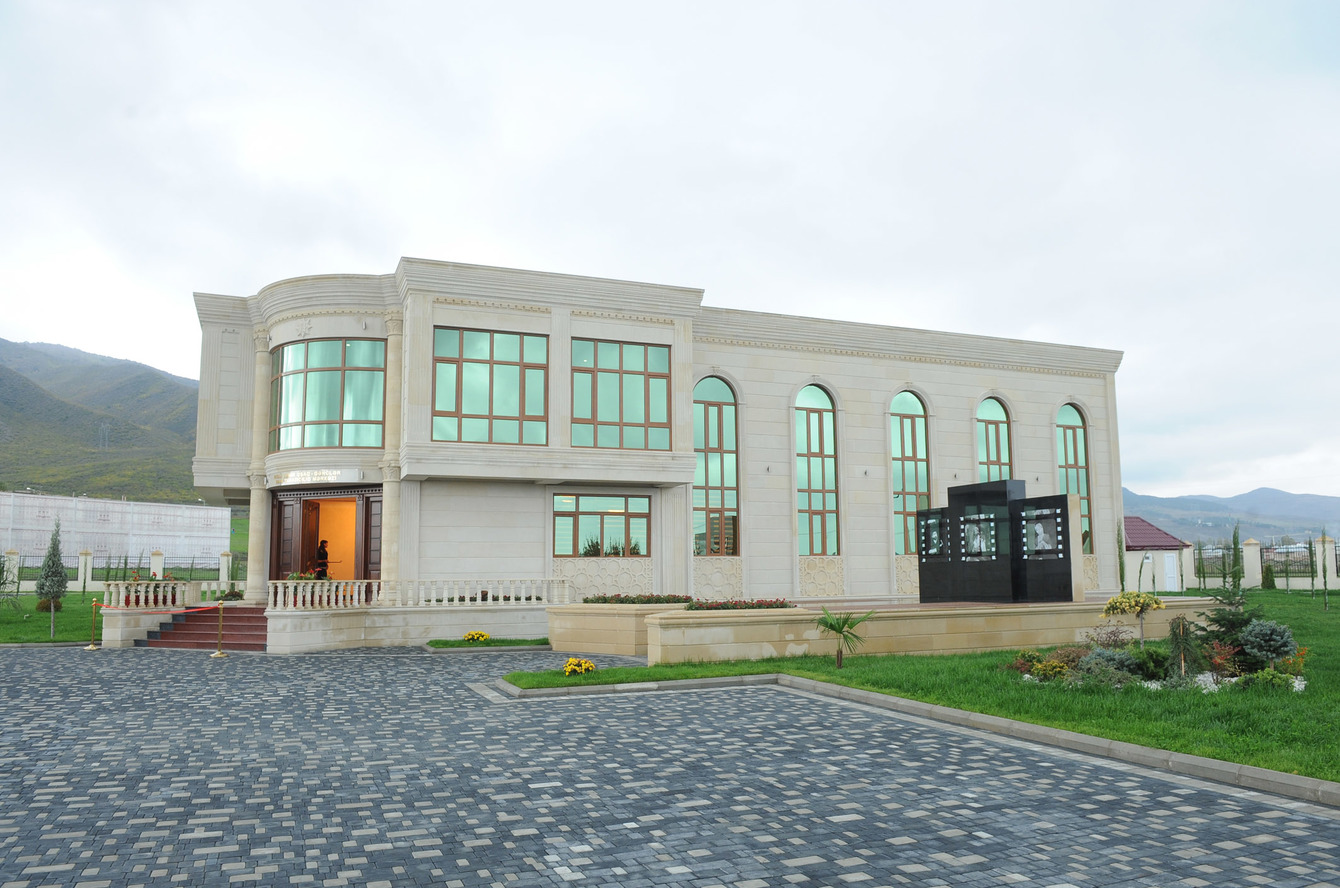|
Hinqar
Hinqar ( hy, Հնղար, Hnghar or ''Henghar'', also hy, Ինգար, Ingar and ''Incha'') is a village in the Agsu District of Azerbaijan. The village forms part of the municipality of Xanbulaq. The village had an Armenian population before the exodus Exodus or the Exodus may refer to: Religion * Book of Exodus, second book of the Hebrew Torah and the Christian Bible * The Exodus, the biblical story of the migration of the ancient Israelites from Egypt into Canaan Historical events * Ex ... of Armenians from Azerbaijan after the outbreak of the Nagorno-Karabakh conflict. References External links * Populated places in Agsu District {{Agsu-geo-stub ... [...More Info...] [...Related Items...] OR: [Wikipedia] [Google] [Baidu] |
Xanbulaq, Agsu
Xanbulaq, Gürcüvan (?-2018) (also, Gyurdzhivan, Gyurdzhyuvan, and Gyurzhyuvan) is a village and municipality in the Agsu Rayon of Azerbaijan Azerbaijan (, ; az, Azərbaycan ), officially the Republic of Azerbaijan, , also sometimes officially called the Azerbaijan Republic is a transcontinental country located at the boundary of Eastern Europe and Western Asia. It is a part of th .... It has a population of 300. The municipality consists of the villages of Gürcüvan, Kəndaxan, Yenikənd, Hinqar, Girdə, and Kövlüc. References * Populated places in Agsu District Baku Governorate {{Agsu-geo-stub ... [...More Info...] [...Related Items...] OR: [Wikipedia] [Google] [Baidu] |
Administrative Divisions Of Azerbaijan
Azerbaijan is administratively divided into 66 districts () and 11 cities () that are subordinate to the Republic. Out of these, 7 districts and 1 city is located within the Nakhchivan Autonomous Republic. The districts are further divided into municipalities (). Additionally, the districts of Azerbaijan are grouped into 14 Economic Regions (). On July 7, 2021, the President of Azerbaijan Ilham Aliyev signed Decree "On the new division of economic regions in the Republic of Azerbaijan". Administrative divisions Contiguous Azerbaijan The territory of former Nagorno-Karabakh Autonomous Oblast presently consists of the districts of Khojavend, Shusha, Khojaly, the eastern portion of Kalbajar and the western portion of Tartar. The Autonomous Oblast was abolished on 26 November 1991, by the Supreme Soviet of the Azerbaijan SSR. Since then, the territory of the autonomous oblast has been administratively split between the aforementioned districts. As a result of the First N ... [...More Info...] [...Related Items...] OR: [Wikipedia] [Google] [Baidu] |
Agsu District
Agsu District ( az, Ağsu rayonu) is one of the 66 districts of Azerbaijan. It is located in the east of the country and belongs to the Mountainous Shirvan Economic Region. The district borders the districts of Ismayilli, Shamakhi, Kurdamir, and Hajigabul. Its capital and largest city is Agsu. As of 2020, the district had a population of 81,000. History According to some sources that Agsu city was founded by Nadir Shah, in 1735. The remainders of that city (“Ruined city”) is situated in the south of Agsu city. The name of the city is derived from “Agsuchay” which flow through the city. City status was given to Agsu, in 1967. Agsu district was arranged, in 1943. it is bounded by Ismayilli from the north and north-west, Shamakhi from the north-west and east, Kurdamir and Hajigabul from the south. The district has 79 villages and 1 city. These dwelling areas are embraced by 24 territorial representations and 60 municipalities. Gagali, Kendoba, Bijo, Calva, Pirhassanli, J ... [...More Info...] [...Related Items...] OR: [Wikipedia] [Google] [Baidu] |
Azerbaijan Time
Azerbaijan Time ( az, Azərbaycanda vaxt), abbreviated as AZT, is the standard time zone in Azerbaijan, four hours ahead of UTC ( UTC+04:00). The daylight saving time adjustment, Azerbaijan Summer Time (AZST), was one hour ahead at UTC+05:00 and was introduced in 1997 and discontinued in March 2016. Azerbaijan Time is the same as Samara Time (Russia), United Arab Emirates Standard Time, Georgia Time, Armenia Time and Seychelles Time. IANA time zone database The IANA time zone database The tz database is a collaborative compilation of information about the world's time zones, primarily intended for use with computer programs and operating systems. Paul Eggert is its current editor and maintainer, with the organizational backi ... contains one zone for Azerbaijan in the file zone.tab, named Asia/Baku. References Time in Azerbaijan {{Azerbaijan-stub ... [...More Info...] [...Related Items...] OR: [Wikipedia] [Google] [Baidu] |
Azerbaijan
Azerbaijan (, ; az, Azərbaycan ), officially the Republic of Azerbaijan, , also sometimes officially called the Azerbaijan Republic is a transcontinental country located at the boundary of Eastern Europe and Western Asia. It is a part of the South Caucasus region and is bounded by the Caspian Sea to the east, Russia (Republic of Dagestan) to the north, Georgia to the northwest, Armenia and Turkey to the west, and Iran to the south. Baku is the capital and largest city. The Azerbaijan Democratic Republic proclaimed its independence from the Transcaucasian Democratic Federative Republic in 1918 and became the first secular democratic Muslim-majority state. In 1920, the country was incorporated into the Soviet Union as the Azerbaijan SSR. The modern Republic of Azerbaijan proclaimed its independence on 30 August 1991, shortly before the dissolution of the Soviet Union in the same year. In September 1991, the ethnic Armenian majority of the Nagorno-Karabakh region formed the ... [...More Info...] [...Related Items...] OR: [Wikipedia] [Google] [Baidu] |
Armenians
Armenians ( hy, հայեր, ''hayer'' ) are an ethnic group native to the Armenian highlands of Western Asia. Armenians constitute the main population of Armenia and the ''de facto'' independent Artsakh. There is a wide-ranging diaspora of around five million people of full or partial Armenian ancestry living outside modern Armenia. The largest Armenian populations today exist in Russia, the United States, France, Georgia, Iran, Germany, Ukraine, Lebanon, Brazil, and Syria. With the exceptions of Iran and the former Soviet states, the present-day Armenian diaspora was formed mainly as a result of the Armenian genocide. Richard G. Hovannisian, ''The Armenian people from ancient to modern times: the fifteenth century to the twentieth century'', Volume 2, p. 421, Palgrave Macmillan, 1997. Armenian is an Indo-European language. It has two mutually intelligible spoken and written forms: Eastern Armenian, today spoken mainly in Armenia, Artsakh, Iran, and the former Soviet ... [...More Info...] [...Related Items...] OR: [Wikipedia] [Google] [Baidu] |
Armenians In Azerbaijan
Armenians in Azerbaijan are the Armenians who lived in great numbers in the modern state of Azerbaijan and its precursor, Soviet Azerbaijan. According to the statistics, about 500,000 Armenians lived in Soviet Azerbaijan prior to the outbreak of the First Nagorno-Karabakh War in 1988. Most of the Armenian-Azerbaijanis however had to flee the republic, like Azerbaijanis in Armenia, in the events leading up to the First Nagorno-Karabakh War, a result of the ongoing Armenian-Azerbaijani conflict. Atrocities directed against the Armenian population took place in Sumgait (February 1988), Ganja (Kirovabad, November 1988) and Baku (January 1990). Today the vast majority of Armenians in Azerbaijan live in territory controlled by the break-away region Nagorno-KarabakhAssessment for Arm ... [...More Info...] [...Related Items...] OR: [Wikipedia] [Google] [Baidu] |
Nagorno-Karabakh Conflict
The Nagorno-Karabakh conflict is an ethnic and territorial conflict between Armenia and Azerbaijan over the disputed region of Nagorno-Karabakh, inhabited mostly by ethnic Armenians, and seven surrounding districts, inhabited mostly by Azerbaijanis until their expulsion during the First Nagorno-Karabakh War. Some of these territories are ''de facto'' controlled, and some are claimed by the breakaway Republic of Artsakh although they have been internationally recognized as part of Azerbaijan. The conflict has its origins in the early 20th century, but the present conflict began in 1988, when the Karabakh Armenians demanded transferring Karabakh from Soviet Azerbaijan to Soviet Armenia. The conflict escalated into a full-scale war in the early 1990s which later transformed into a low-intensity conflict until four-day escalation in April 2016 and then into another full-scale war in 2020. A ceasefire signed in 1994 in Bishkek was followed by two decades of relative stability ... [...More Info...] [...Related Items...] OR: [Wikipedia] [Google] [Baidu] |
Research On Armenian Architecture
Research on Armenian Architecture (RAA) is a non-governmental organisation NGO (Foundation since 2010) established in Aachen, Germany, in 1982 by Dr. Armen Hakhnazarian. Long before its official creation, RAA interests and activities have been carried out since the late 1960s. In 1996, RAA USA was founded, followed by RAA Armenia in 1998. Until 2020, Samvel Karapetian was the director of the RAA-Armenia. Jora Manucharian is currently the chairman of the board of trustees of the foundation, and RAA-Armenia is governed by a board of directors: Emma Abrahamian (Samvel's wife), managing director; Raffi Kortoshian, co-director administrative and publications; Ashot Hakobyan, co-director architectural activities; Armen Gevorgyan, co-director computers and technology Activities Research on Armenian Architecture (RAA) investigates, and documents Armenian monuments located outside the borders of present-day Armenia, namely in Historical Armenia (the Armenian districts of Turkey, Ira ... [...More Info...] [...Related Items...] OR: [Wikipedia] [Google] [Baidu] |



